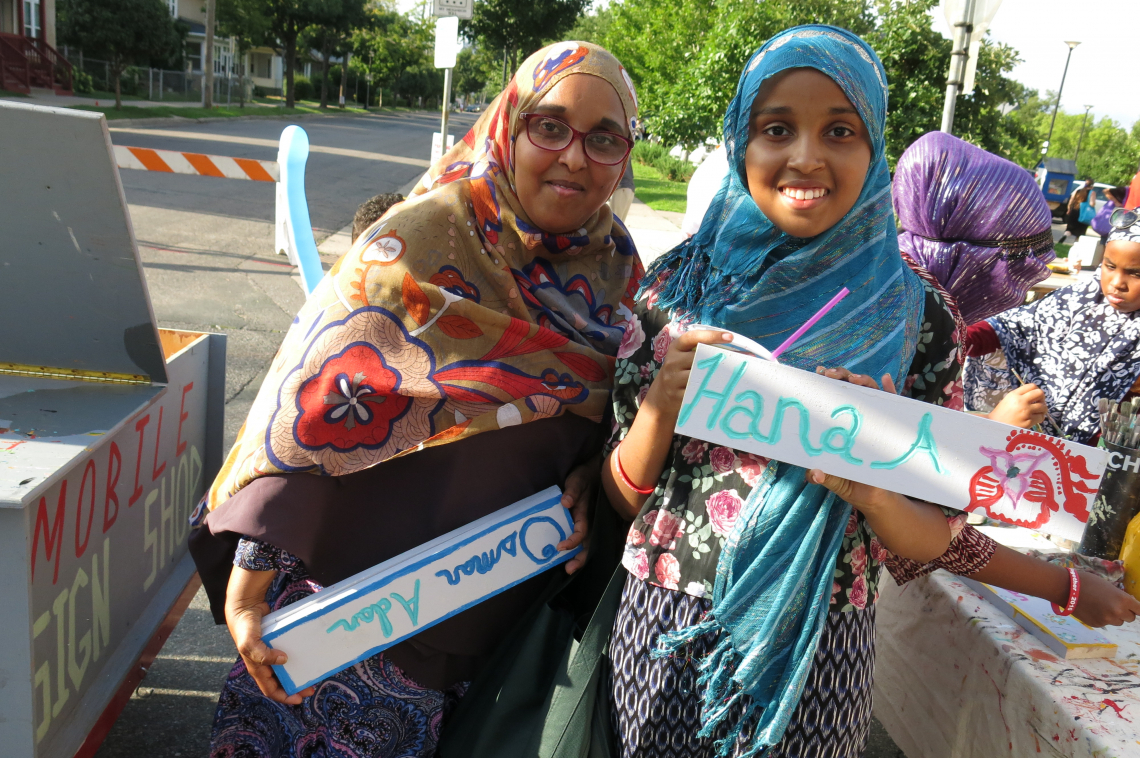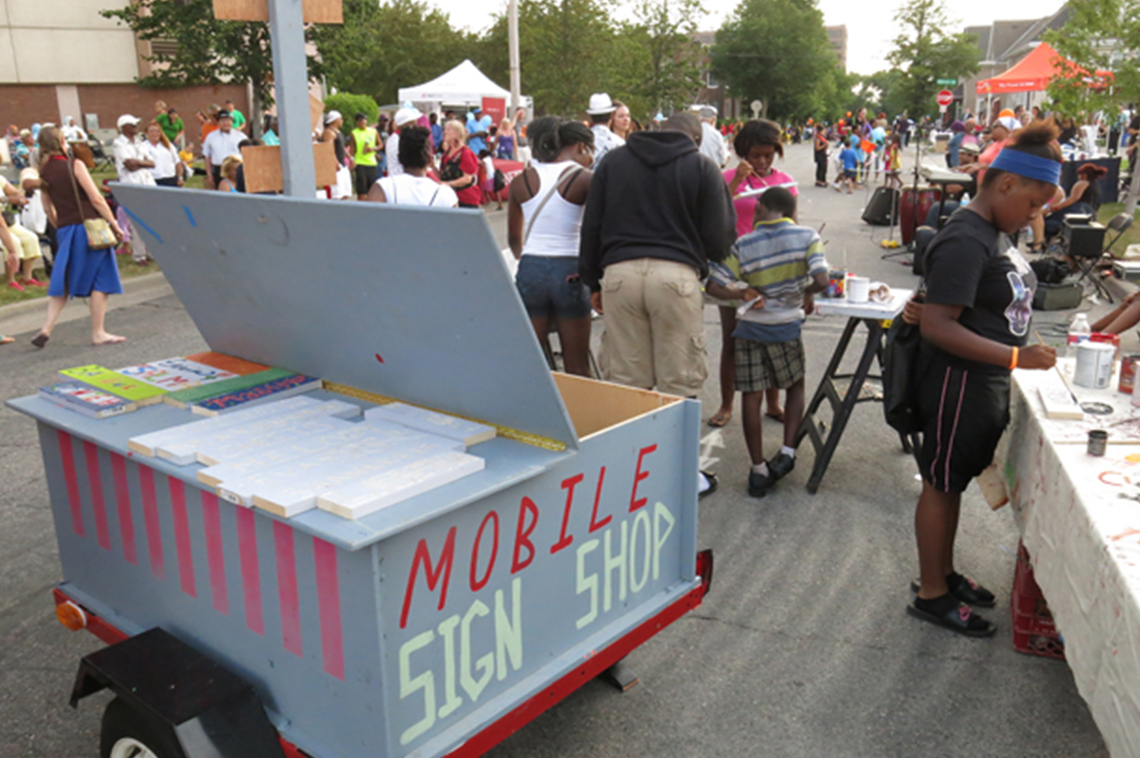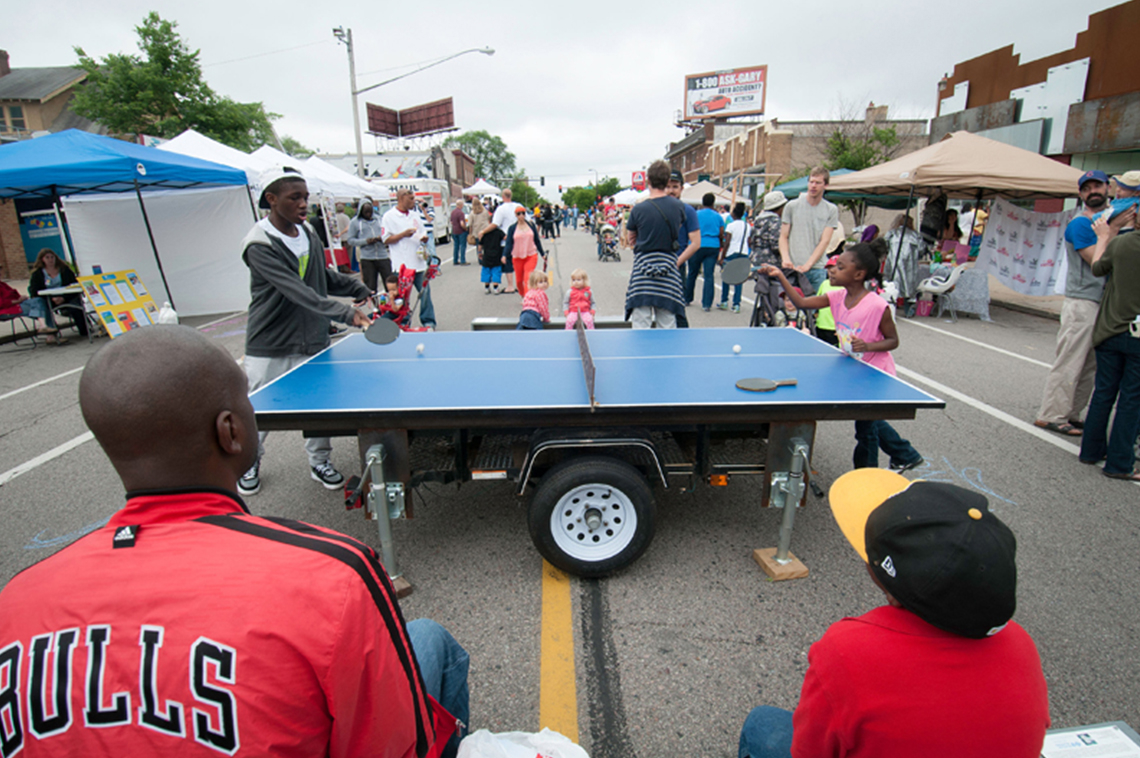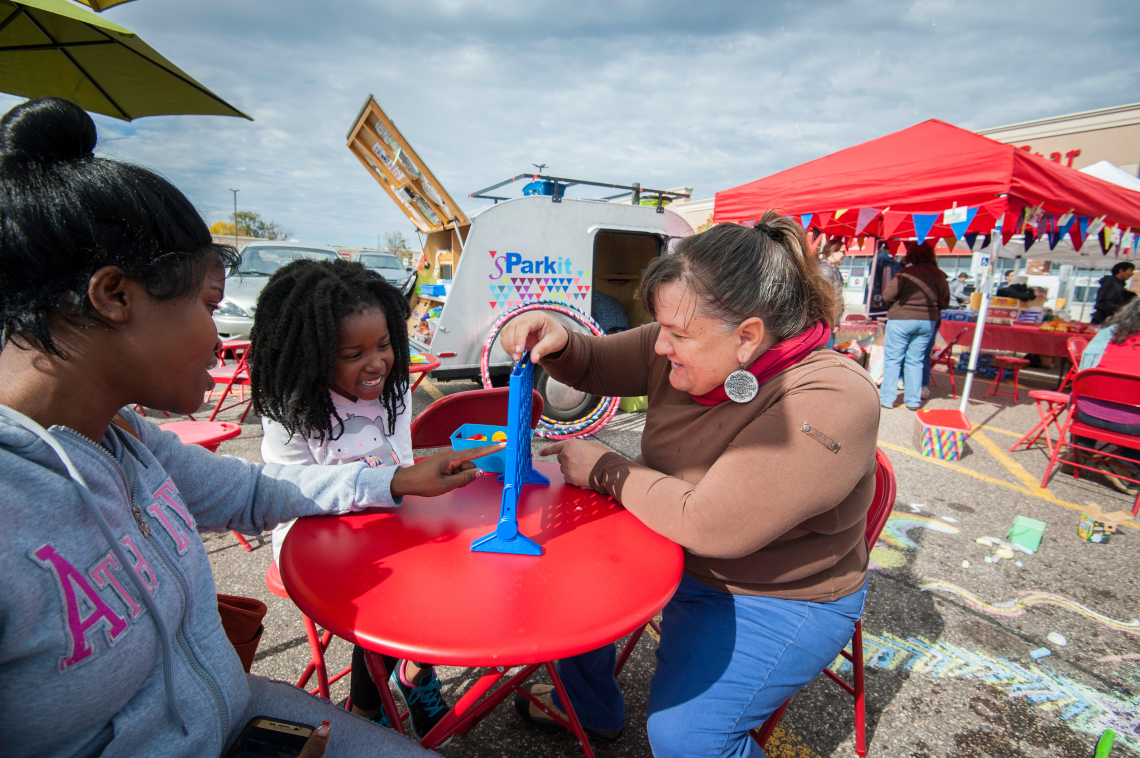



Peter Haakon Thompson is a Minneapolis-based artist and the Community Development Coordinator at Springboard for the Arts. For many years, he has initiated and participated in art projects that center community engagement—some while wearing his “artist” hat, and some as an arts administrator.
We asked Peter to share some examples of successful creative placemaking ventures he’s been involved with, and to give us his top tips for making the most of every collaboration.
Example 1: Name signs in Phillips West
The project:
My Mobile Sign Shop (MSS) project started with a grant from the Artist Neighborhood Partnership Initiative (ANPI) at the University of Minnesota’s Center for Urban and Regional Affairs. ANPI pairs artists with neighborhoods who want to pursue their goals from an arts perspective.
The population of Phillips West is something like 90 percent renters. A local organization can struggle to engage residents in a neighborhood like that, since it doesn’t have the same type of buy-in as a place with more property ownership. Phillips West also had a certain perception from people driving by that it wasn’t much of a place—just somewhere to speed through.
So we did a project that was meant to help connect folks there to the things the Phillips West Neighborhood Organization (PWNO) could do for them, and at the same time let passers-by know that Phillips West was a place people called home. We set up the MSS and gave residents info about PWNO and the opportunity to draw their names on signs that we then posted around the neighborhood.
The takeaways:
Putting your name on a sign and displaying it for all to see is a powerful statement about belonging and identity. And it’s a lot easier than buying a house!
Example 2: “Teach Me Your Language” in Cedar-Riverside
The project:
I went to grad school at UMN, and their art school campus is in Cedar-Riverside, a neighborhood with a large Somali population. I realized that although I lived right there, I didn’t know how to say anything in Somali. I was renting a little storefront with other students and doing things there that were mostly attended by other students.
So I made a sandwich board that said “Teach Me Your Language” on one side and “Come On In” on the other and put it outside when I was working. But I soon realized that I was asking the participants to be the brave person in that relationship. So I started going outside and standing by the sign instead. Some people wouldn’t want to say anything, but more often they accepted the invitation to talk. Our conversations usually grew to be about much more than vocabulary.
The takeaways:
If you’re asking folks to do something, you need to be the one to take the risk and put yourself out there first.
An earlier iteration of my sign had said “Ask Me Anything,” and I hung out with it on a walking/biking path, but that phrase was too broad. I learned that if it’s a specific thing anybody can talk about—everybody speaks some language!—that makes a much easier introduction to any larger topic.
Sharing something artist-made that looks out of the ordinary gives people permission to come over and ask, “What is this weird thing?” They ask that before they ask what you’re doing. Once you pique their curiosity, it’s much easier to start talking about anything else. Offering something unexpected gives people permission to ask, and that’s when everything begins.
Example 3: Creative survey tools at community events
The project:
The Ridgedale Center mall in Minnetonka, like many malls around the country, is not as busy as it used to be, so the city is taking part of its parking lot and turning it into a public park. In the process, they’re trying to figure out what the community wants. They held a free family event called Rock at Ridgedale with a band and food and four Ready Go tools [Peter designed several of the tools in the Ready Go catalog] that helped them collect people’s opinions. They also had dot-voting, which gets used all the time, but were curious about how the Ready Go tools could help them get less “quant” info. It’s not always about the amenities people want—there’s more to it. For example, people could make a little postcard about how they wanted the park to feel.
The sPARKit trailer has been used by Hennepin County at events where they wanted to get feedback about an intersection redesign. Last summer, the City of Bloomington hired 20 Ready Go tools to use at six of their events.
The takeaways:
Instead of—or in addition to—holding a community meeting, these municipalities are making themselves present at a festival or other event where people are already going. They’re literally meeting people where they are, and that way, they’re getting a much broader sample than just the folks who would show up to a town hall or fill out an online survey.
Alejandra Pelinka, Bloomington’s first director of creative placemaking, told me the city was given a spot at one festival in the area where the “fun” stuff was—rather than where all the nonprofits were!—because they were using the Ready Go tools. She thought that was really valuable.
Advice to organizations & government agencies who want to engage artists in community development projects
- If you want to work with artists, start talking to them and see what they have to say!
- If you don’t know any artists, you can start with your local college’s art department—the people who teach there are likely connected to the local arts community—or with arts organizations in your town. Most local governments also have an art or public art commission.
- Approach artists as professionals. For example, don’t expect them to work without pay! Recognize that they’re pros with skills you value, like any consultant you’d hire. You wouldn’t say to a landscape architect, “I think this will be good exposure; this will be fun. Therefore you should be okay with doing it for free."
Advice to artists who want to engage organizations & government agencies in community development projects
- Think about how much you want to charge for your services.
- Be open to different types of collaboration: how else could people use that thing you made?
- Make sure the art you make for public engagement projects is tied to stuff that you’re really passionate about and interested in. Mike Hoyt made One Another, a mobile drawing station, and he’s an amazing portrait artist and loves talking to people. I have the Temporary Table Tennis Trailer, and I’m an avid player myself. Don’t try to think of something that’s going to appeal to people; consider what you’re passionate about and how there’s a way to collect feedback around that. People can sense when you’re excited about something and want to share it. They can sense that authenticity.
---
- Peter co-founded Art Shanty Projects, which received a grant from ArtPlace in 2015.
- Creative Exchange is Springboard for the Arts’ national platform for sharing artful ideas for developing strong communities. It contains the Ready Go Toolkit for making mobile artist tools where you live.
- Read more about how interactive art installations can invite residents to talk about their community.





